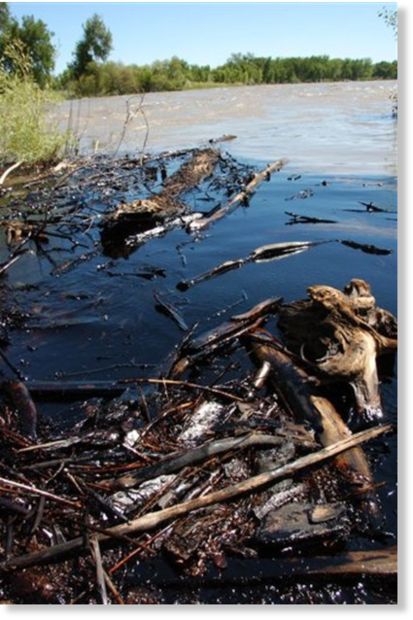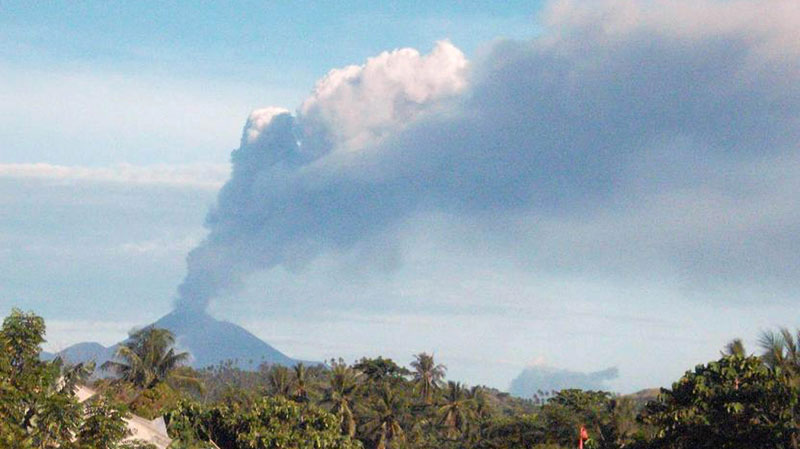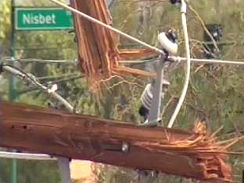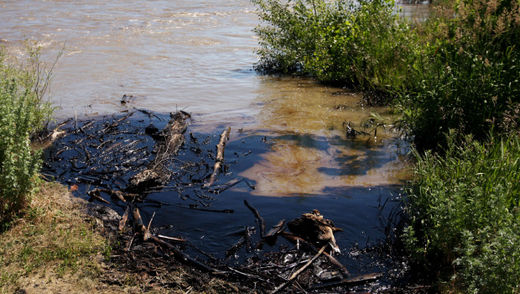
© The Associated Press / Matthew BrownOil from a ruptured ExxonMobil pipeline is seen in the Yellowstone River and along its banks near Laurel, Mont., Saturday July 2, 2011. The pipeline break was contained early Saturday morning but the spill stretched over dozens of miles.
An ExxonMobil pipeline that runs under the Yellowstone River in Montana ruptured Saturday and leaked hundreds of barrels of oil into the waterway, causing a 25-mile plume that fouled the riverbank and forced municipalities and irrigation districts downstream to close intakes.
The break near Billings in south-central Montana led to temporary evacuations of hundreds of residents along a 20-mile stretch. Cleanup crews deployed booms and absorbent material as the plume moved downstream at an estimated 5 to 7 mph.
The river has no dams on its way to its confluence with the Missouri River just across the Montana border in North Dakota. It was unclear how far the plume might travel.
"The parties responsible will restore the Yellowstone River," Mont. Gov. Brian Schweitzer said.
ExxonMobil spokeswoman Pam Malek said the pipe leaked an estimated 750 to 1,000 barrels of oil for about a half-hour before it was shut down. Other Exxon officials had estimated up to 42,000 gallons of crude oil escaped.
Duane Winslow, Yellowstone County director of disaster and emergency services, said the plume was dissipating as it moved downstream. "We're just kind of waiting for it to move on down while Exxon is trying to figure out how to corral this monster," Winslow said.
"The timing couldn't be worse," said Steve Knecht, chief of operations for Montana Disaster and Emergency Services, who added that the plume was measured at 25 miles near Pompeys Pillar National Monument. "With the Yellowstone running at flood stage and all the debris, it makes it dang tough to get out there to do anything."




Comment: Let us suggest a reason, why instances of noctilucent clouds are intensifying.
What we suspect has been happening, based on our research thus far, is that the upper atmosphere is cooling because it is being loaded with comet dust, which shows up in the form of noctilucent clouds and other upper atmospheric formations.
Magnificent and mesmerizing noctilucent clouds (also called polar mesospheric clouds), were once considered to be rare. But now they are puzzling scientists with their recent dramatic changes. Apparently, the clouds are growing brighter, are seen more frequently, are visible at ever lower latitudes and are now appearing even during the day. If scientists were allowed to conduct honest interdisciplinary research, such changes wouldn't be a mystery.
They would be able to figure out that comet dust is electrically-charged which is causing the earth's rotation to slow marginally. The slowing of the rotation is reducing the magnetic field, opening earth to more dangerous cosmic radiation and stimulating more volcanism. The volcanism under the sea is heating the sea water which is heating the lower atmosphere and loading it with moisture.
The moisture hits the cooler upper atmosphere and contributes to a deadly mix that inevitably leads to an Ice Age, preceded for a short period by a rapid increase of greenhouse gases and "hot pockets" in the lower atmosphere, heavy rains, hail, snow, and floods.